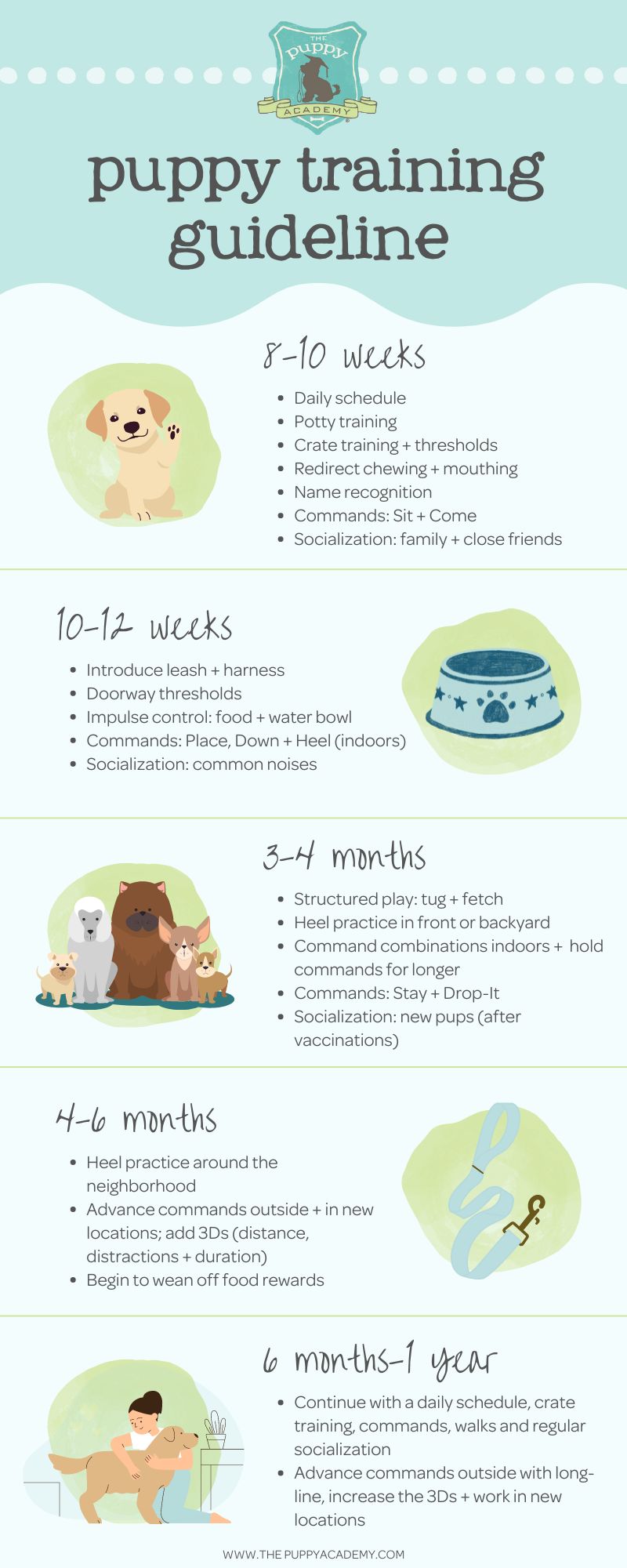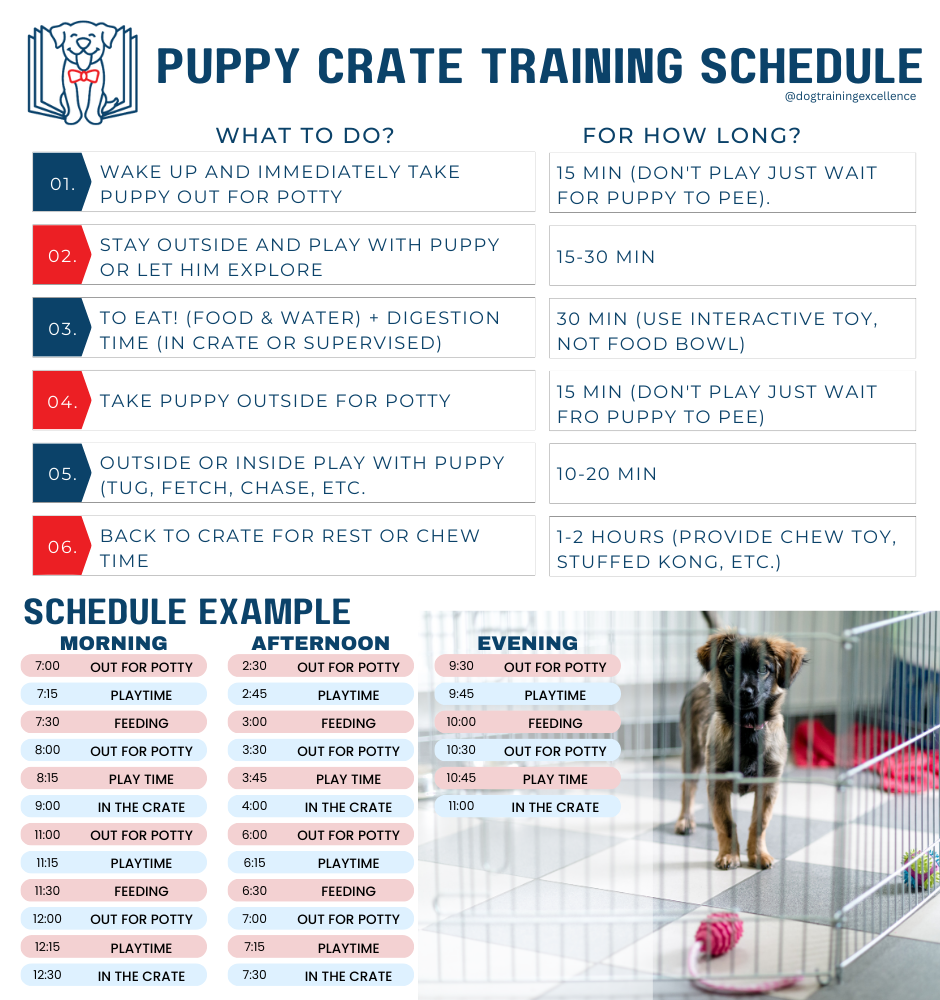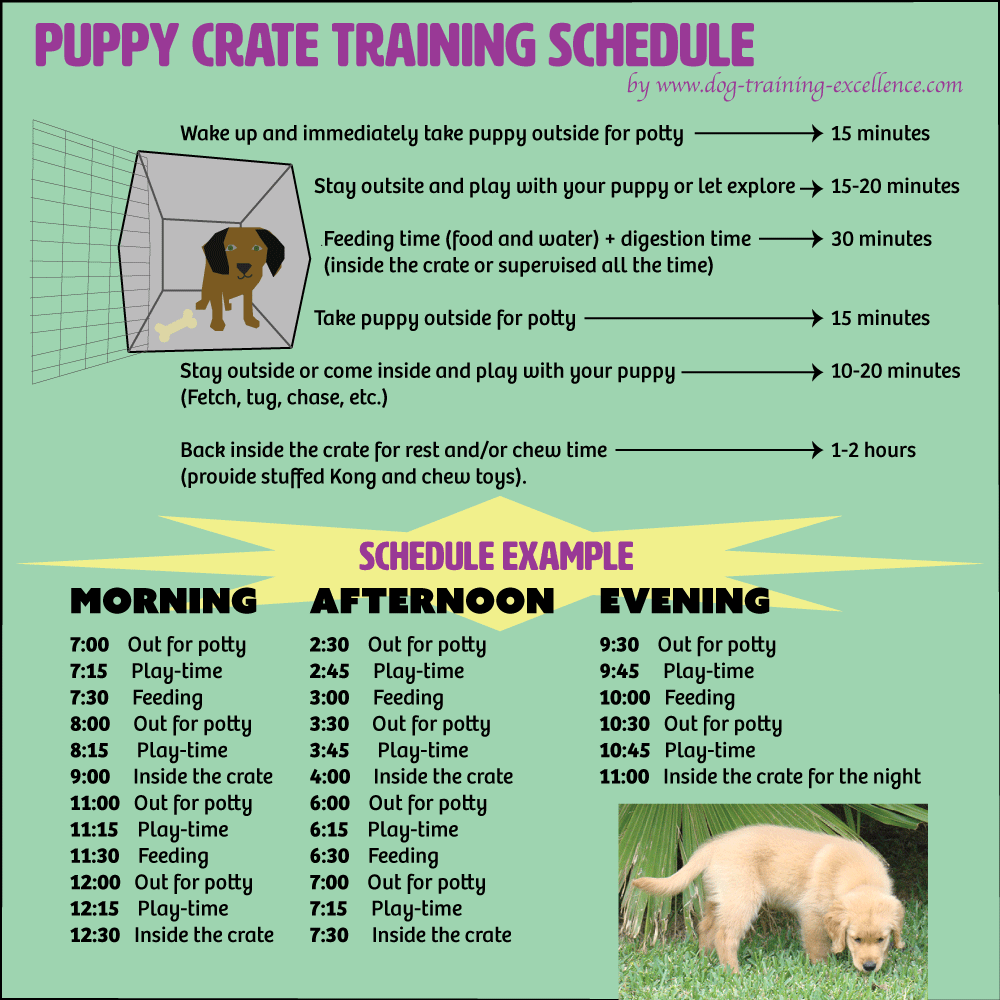To crate train a 4-month-old puppy, establish a schedule with regular potty breaks, meal times, and play sessions, gradually increasing crate time as they get accustomed to it. Keep the crate in a quiet, but accessible area, and provide comfort items like blankets or toys to make it inviting.
Start with short periods in the crate, and gradually increase the duration while rewarding good behavior. Consistency and patience are key in successfully crate training a young puppy. Crate training is an important aspect of raising a well-behaved and confident dog.
It helps with potty training, prevents destructive behavior, and gives the puppy a safe, den-like space of their own. With the right approach, your puppy can learn to view their crate as a positive and secure environment. This guide will outline an effective crate training schedule for a 4-month-old puppy, ensuring a smooth transition for both the puppy and the owner.
Importance Of Crate Training
Crate training a 4-month-old puppy is crucial for its development. It provides a safe space for the puppy and helps in building independence.

Credit: www.thepuppyacademy.com
Setting Up The Crate
To set up the crate for your 4-month-old puppy, start by ensuring it’s cozy with soft bedding. Place some of the puppy’s favorite toys and treats inside to make it inviting. Introduce the crate gradually, and use positive reinforcement techniques to create a positive association for successful crate training.
In order to successfully crate train your 4-month-old puppy, it is important to set up the crate properly. Start by choosing the right crate size for your puppy. The crate should be large enough for your puppy to stand up, turn around, and lie down comfortably. A crate that is too big may encourage your puppy to eliminate in one corner and sleep in another.
Once you have the right size crate, make it comfortable for your puppy. Line the bottom with a soft blanket or bed, and add some toys or chew bones to keep your puppy occupied. It’s also a good idea to place the crate in a quiet area of your home where your puppy can feel safe and secure. By following these steps, you can create a positive and comfortable space for your puppy to learn and adapt to crate training.
Introducing The Crate To Your Puppy
Crate training is an important step in the development of a 4-month-old puppy. It helps them feel safe and secure while also providing a controlled environment for potty training. When introducing the crate to your puppy, it’s essential to create positive associations. To do this, place enticing toys, treats, and familiar bedding inside the crate. Encourage exploration by leaving the crate door open and allowing your puppy to explore at their own pace.
Avoid forcing them into the crate and instead use positive reinforcement when they voluntarily enter. Once they are comfortable going inside, gradually close the door for short periods, gradually increasing the duration as they become more acclimated. Remember, consistency and patience are key during this training process. With time and positive reinforcement, your puppy will view the crate as a safe and comfortable space.
Establishing A Routine
A feeding schedule is crucial for a 4-month-old puppy. Offer meals at the same times every day to establish a routine. This helps regulate their bathroom breaks and aids in house training. Additionally, create a potty training routine to take your puppy outside after meals, playtime, and naps. Consistency is key to successful crate training.
Crate Training Tips And Tricks
When crate training a 4-month-old puppy, using treats wisely is essential. Avoid punishments to create a positive learning environment. Be consistent with the schedule, starting slow and gradually increasing crate time. Make the crate craving pleasant by placing favorite toys and treats inside. Create positive associations with the crate to reduce anxiety.
Reward good behavior with treats and praise immediately. Redirect negative behavior with a firm “no” and provide alternative activities. Remember that crate training requires patience and persistence for effective results. Consult a professional trainer for additional guidance, if needed.
Handling Whining And Crying
When handling whining and crying from a 4-month-old puppy during crate training, stay patient and consistent. Establish a schedule for feeding, potty breaks, and playtime to help your puppy adjust and feel secure in their crate. Providing comfort items like a blanket or toy can also help ease their anxiety.
| To handle whining and crying: |
| 1. Provide comfort without reinforcing negative behavior. |
| 2. Use calm, soothing tones to reassure your puppy. |
| 3. Offer a favorite toy or blanket for comfort. |
| Avoiding reinforcing negative behavior: |
| 1. Ignore whining if for attention. |
| 2. Stay consistent in your responses to curb unwanted behavior. |
Daytime Crate Training Schedule
Structured Playtime: Engage your puppy in structured playtime activities to burn off energy and stimulate their mind. Incorporate interactive toys and short training sessions to keep them entertained and engaged.
Nap and Quiet Time: After a period of structured playtime, provide your puppy with a quiet and comfortable space for nap time. Ensure the crate is cozy, with soft bedding and a soothing environment. This helps your puppy learn to associate the crate with relaxation and rest.

Credit: www.dog-training-excellence.com
Nighttime Crate Training Schedule
Addressing Nighttime Needs: The pre-bedtime Routine includes taking away water 2 hours before bedtime and providing the last potty break. During night, keep the crate beside your bed to comfort the pup with your presence. If the pup wakes and whines, take it out for a quick potty break and then back in the crate. Refrain from engaging in play or attention to encourage the puppy’s return to sleep.

Credit: www.dreamydoodles.com
Frequently Asked Questions
How Much Crate Time Does A 4 Month Old Puppy Need?
A 4-month-old puppy needs around 3-4 hours of crate time during the day for naps and quiet time.
What Is A Good Schedule For A 4-Month-Old Puppy?
A good schedule for a 4-month-old puppy includes feeding 3-4 times daily, regular potty breaks, playtime, socialization, and training sessions. Adequate exercise and plenty of love and attention are essential for your puppy’s overall well-being. Stick to a consistent routine for a happy and healthy pup.
Can You Still Train A 4 Month Old Puppy?
Yes, you can still train a 4-month-old puppy. Starting training early helps develop good behavior and obedience. Keep sessions short, use positive reinforcement, and focus on basic commands like sit, stay, and come. Consistency and patience are key for successful training at this age.
Is It Too Late To Crate Train A 4 Month Old Puppy?
No, it’s not too late to crate-train a 4-month-old puppy. With consistency and positive reinforcement, your puppy can still learn to feel comfortable and secure in a crate. Gradually introduce the crate and use treats to create positive associations.
Stick to a consistent routine for best results.
Conclusion
To sum up, crate training is an essential aspect of a 4-month-old puppy’s routine. By following a structured schedule and being consistent with positive reinforcement, you can help your puppy adapt to the crate and feel comfortable. With patience and understanding, both you and your puppy can benefit from crate training.

Hello, I’m Ethan Mitchell. My passion is dog training and behavior enthusiasts. With years of experience working with various breeds, my goal at Dog Advisor Pro is to help dog owners build strong, loving relationships with their furry friends through effective training techniques. Understanding a dog’s behavior is the key to harmonious companionship. I am dedicated to sharing practical training tips that improve the lives of dogs and their owners.


